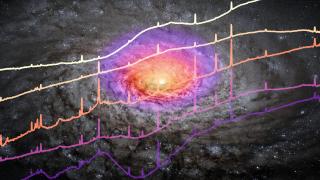Bibcode
Victoria-Ceballos, César Ivan; González-Martín, Omaira; Masegosa, Josefa; Longinotti, Anna Lia; Esparza-Arredondo, Donaji; Osorio-Clavijo, Natalia
Bibliographical reference
The Astrophysical Journal
Advertised on:
9
2023
Journal
Citations
2
Refereed citations
2
Description
Above ~3 keV, the X-ray spectrum of active galactic nuclei (AGNs) is characterized by the intrinsic continuum and Compton reflection features. For type-1 AGNs, several regions may contribute to the reflection. To investigate the nature of the reflecting medium, we perform a systematic analysis of the reflector using XMM-Newton and Nuclear Spectroscopic Telescope Array observations of a sample of 22 type-1 AGNs. We create a baseline model that includes Galactic absorption and an intrinsically absorbed power law, plus a reflection model. We test a set of nine reflection models in a subsample of five objects. Based on these results, we select three models to be tested on the entire sample, accounting for distinct physical scenarios: neutral/distant reflection, ionized/relativistic reflection, and neutral/distant+ionized/relativistic reflection, namely, a hybrid model. We find that 18 sources require the reflection component to fit their spectra. Among them, 67% prefer the hybrid model. Neutral and ionized models are equally preferred by three sources. We conclude that both the neutral/distant reflector most probably associated with the inner edges of the torus and the ionized/relativistic reflector associated with the accretion disk are required to describe the reflection in type-1 AGNs.
Related projects

Nuclear Activity in Galaxies: a 3D Perspective from the Nucleus to the Outskirts
This project consists of two main research lines. First, the study of quasar-driven outflows in luminous and nearby obscured active galactic nuclei (AGN) and the impact that they have on their massive host galaxies (AGN feedback). To do so, we have been granted time with the Gran Telescopio CANARIAS (GTC) in the optical and near-infrared ranges
Cristina
Ramos Almeida